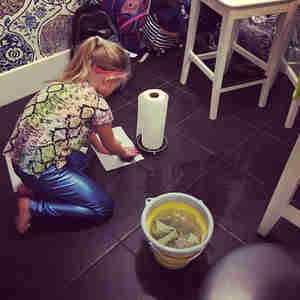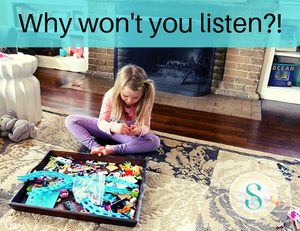Turning nap strike into genius hour
By the age of 3, your child has approached many amazing milestones. They are scootering, potty training, running, hopping, even coloring and telling jokes and stories. With all this development comes a price- nap strike! It is common for children around the age of 3 (usually right before) to “drop the nap.” Don’t be fooled!
Their brain is processing so much they just can’t turn it off.
For some families, this is never an issue and your little one will happily nap until they skip off to kindergarten. My oldest did this, ostensibly as a reward for the torture I endured when she was a colicky baby, and it was lovely. But not all kids will, and this is where Sproutable can help.
Some parents will run their 3-year-old hard all day, just to have them meltdown for the witching hours it takes to feed them and get them through the bedtime routine. It is exhausting for everyone. If your child is able to handle it and maintain their cheerful self throughout the day, good for you. Not a problem, no need to fix it. For the rest of us, here are some tips.
PRESERVE THE TIME SLOT
Whatever you do, cherish that time. Stick less to the clock and more to the activity. So even if you have a long morning out with a picnic lunch and more play, stick to the routine that when you get home (or after lunch if you eat at home), it is always quiet time. Make a plan of how long quiet time is (45 mins? 1 hour?), be clear with your child and follow through.
STICK TO THE ROUTINE
Keep the routine consistent. This routine might include books (audio or read aloud), using the potty, and changing into nap jammies. Include resting the body. Most children will fall asleep within 20-30 minutes. If they haven’t fallen asleep by then, let them play quietly in their room for another hour. If they come out, walk them back in and show them something else they can play with quietly, like a bin of puzzles or blocks.
TAKE TIME FOR TRAINING
This is important. Get explicit and do a full walkthrough and practice what it looks like to rest in bed, what toys and games they can play with during the quiet time, and what method you will use to let them know when the time is up. Visual timers (not a screen) or lights that turn different colors are helpful! This is also YOUR training. Make sure the room is kid “proof.” We learned this the hard way when we left a handful of permanent markers in easy reach. Because our three year old shared a room with her 8-year-old sister, we needed to do extra teaching (including rearranging) around exactly what shelves she could reach and play with.

TELL THEM WHY
Kids (and grown-ups) are more motivated when they understand why they are doing something. Explain that it is healthy to rest our bodies and our brains and that it is helpful to have time by ourselves to be creative and have our own special time. I love this idea of letting children treat themselves as a friend too, and that they are awesome to get to know!
GENIUS HOUR
This is the best part. If you can keep this quiet time going, it turns right into a genius hour as they hit school age. One of my favorite teachers on the planet, Ms. Colando, did this with her 4th graders and my jaw hit the floor when I saw it in action. Her students were passionately working quietly and independently on their self designed projects. Aha! I thought and folded it right into the mix at home. From kindergarten on, my kids use that “genius hour” on the weekends, yep, that same time right after lunch, or when we get home from our Saturday adventure, to “grow their brains.” This means a little reading, writing a letter to a family member or friend (or writing a story or play if you are my middle child and future filmmaker), doing some math, and then working on their passion project. Because we are ALL doing this, we get some peace in the house, a break from each other, and we come back together ready to connect.
Want to learn more about your child’s sleep habits?
Check out our book recommendations:
The Happy Sleeper by Heather Turgeon and Julie Wright
Healthy Sleep Habits, Happy Child by Marc Weissbluth, MD
Video: Book Review: The Happy Sleeper





Comments